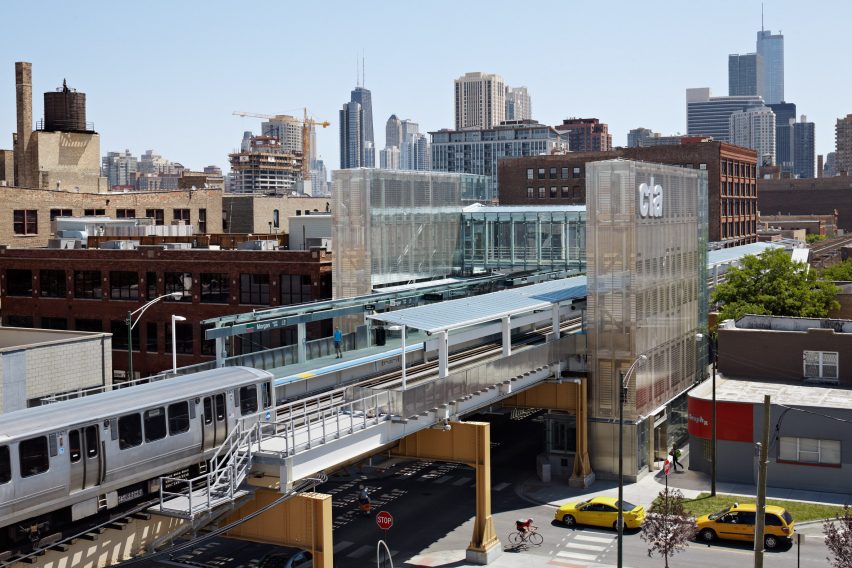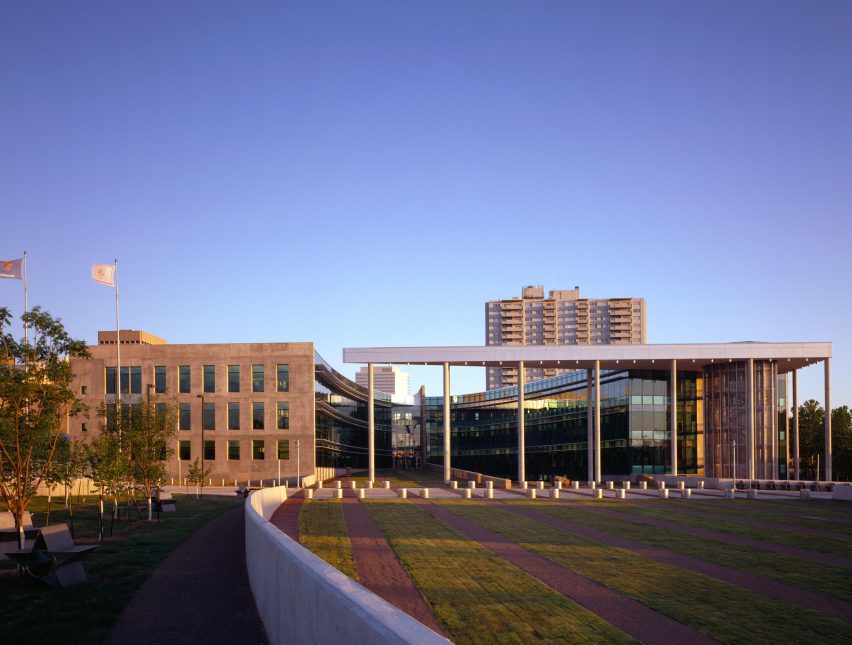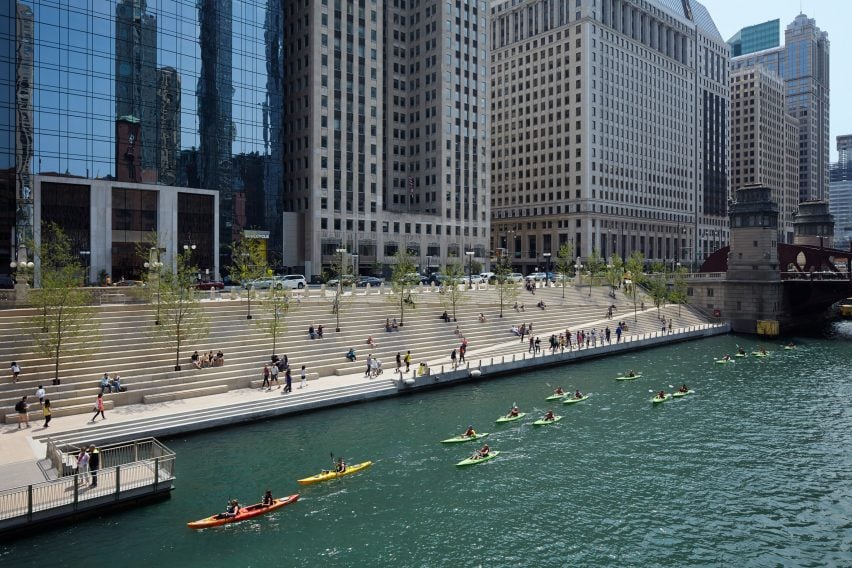US cities must push for more mid-rise buildings and better public spaces to become more equitable, 2023 AIA Gold Medal winner Carol Ross Barney tells Dezeen in this interview.
Barney, who runs Ross Barney Architects, said that investing in undervalued infrastructure, rethinking density and continuing to open up the architecture field to women and minorities are essential for rethinking cities for the 21st century.
The Chicago-born and based architect said that though a denser urban fabric is needed, skyscrapers are not the right way to deliver it.
Skyscrapers will “just be trophies”
“Tall buildings are only good when you need density and we need density when we need to communicate face to face,” she said.
“And I think eventually they’ll just be trophies because they’re just not that valuable.”
Changes in work habits brought about by widespread high-speed internet and the Covid-19 pandemic have laid bare the shortcomings in the way American cities are planned, Barney argued.
“I think the world had kind of a rude awakening the last two or three years because all of a sudden our cities and our societies didn’t work the way we expected them to,” she said.
“One of the things we’re learning is that this very traditional American idea about cities – that they should be zoned almost horizontally – doesn’t work, especially now when we have hybrid work and 24-hour cities.”
Many American cities were built with horizontal zoning and organisations, meaning that different areas serve different functions, with business at the centre, retail and residential fanning out from centres.
But Barney said that even density within areas zoned for height like Downtown Chicago and Manhattan has been lacking, citing the massive vacancies in office space in downtown Chicago as an example.

Instead, Barney said, the concept of the “missing middle” – the building typology that favours mid-rise structures arrayed in walkable zones – should be further explored when planning cities.
Areas of Chicago that have taken up this idea are working better for all their inhabitants, she claimed.
“I think Chicago is the personification of what American cities need to do to be equitable,” she said.
“The idea of equity in cities is an important one because I think it makes whole countries and whole societies economically more healthy.”
“A lot of times it’s analyzed by how much money people make, or you know, what type of house they live in. But I think it’s also reflected in our infrastructure and in our spaces, and in our public amenities. So the missing middle is a very cool project.”
Barney has spent most of her career practising in the city, which she says is “the most American of cities” and has been a “great laboratory” for testing new ways of imagining the city because of its mix of spread-out suburban zones and a high-density core.
She is perhaps best known for her work on the Chicago Riverwalk, a project that added walking paths, leisure spaces and architectural details to a 1.25 mile stretch along the river that runs through the city.
“Lack of design is an economic problem”
She also designed a number of train stations in the city, and the focus on good design for often-overlooked public spaces is key to her vision for more healthy cities.
“What we’ve learned over the years is that actually, what I believe personally, is that those spaces in between are extraordinarily important,” she explained.
These projects should involve public consultation to figure out the needs of a community, a trend that she is seeing become more prevalent and is the key to orienting design around “legitimate shared goals” to expand design to address city-wide problems.
“The lack of design is an economic problem, and the value it brings is far in excess of its economic cost.”
“And I think that the bottom line fixation is preventing us from getting that value.”

Barney has also been a long-time advocate of expanding the participation of women in design.
Educated at the University of Illinois at Urbana Champaign, Barney noted that there were only three women in her graduating class.
She went on to become a founding member of Chicago Women in Architecture in 1974 but says that the industry still suffers from a lack of diversity.
“You still look at the highest levels of architects in the profession, the partners or the owners of the major firms women are still not represented there,” she said.
“The major commissions are still not frequently given to women.”

Still, Barney has carried out some of the most high-profile projects in her home city and throughout the country.
In 2001, she designed the new Oklahoma City Federal Building after a terrorist bombing destroyed much of the pre-existing structure in 1995.
Barney said that her career has been driven by two core beliefs.
“First of all, I’ll never present anything that I don’t believe should be built. I won’t,” she said.
“And the second is, I believe that for any given problem, or any challenge, there are hundreds of good solutions, ones that you’d give awards to and will become beloved.”

